- Home
- Fredric Brown
Etaoin Shrdlu
Etaoin Shrdlu Read online
Etaoin Shrdlu
Fredric Brown
Etaoin Shrdlu
by Fredric Brown
It was rather funny for a while, the business about Ronson’s Linotype. But it began to get a bit too sticky for comfort well before the end. And despite the fact that Ronson came out ahead on the deal, I’d have never sent him the little guy with the pimple, if I’d guessed what was going to happen. Fabulous profits or not, poor Ronson got too many gray hairs out of it.
“You’re Mr. Walter Merold?” asked the little guy with the pimple. He’d called at the desk of the hotel where I live, and I’d told them to send him on up.
I admitted my identity, and he said, “Glad to know you, Mr. Merold. I’m—” and he gave me his name, but I can’t remember now what it was. I’m usually good at remembering names.
I told him I was delighted to meet him and what did he want, and he started to tell me. I interrupted him before he got very far, though.
“Somebody gave you a wrong steer,” I told him. “Yes, I’ve been a printing technician, but I’m retired. Anyway, do you know that the cost of getting special Linotype mats cut would be awfully high? If it’s only one page you want printed with those special characters, you’d do a lot better to have somebody hand-letter it for you and then get a photographic reproduction in zinc.
“But that wouldn’t do, Mr. Merold. Not at all. You see, the thing is a secret. Those I represent— But skip that. Anyway, I daren’t let anyone see it, as they would have to, to make a zinc.”
Just another nut, I thought, and looked at him closely.
He didn’t look nutty. He was rather ordinary-looking on the whole, although he had a foreign—rather an Asiatic—look about him, somehow, despite the fact that he was blond and fair-skinned. And he had a pimple on his forehead, in dead center just above the bridge of the nose. You’ve seen ones like it on statues of Buddha, and Orientals call it the pimple of wisdom and it’s something special.
I shrugged my shoulders. “Well,” I pointed out, “you can’t have the matrices cut for Linotype work without letting somebody see the characters you want on them, can you? And whoever runs the machine will also see—”
“Oh, but I’ll do that myself,” said the little guy with the pimple. (Ronson and I later called him the L.G.W.T.P., which stands for “little guy with the pimple,” because Ronson couldn’t remember his name, either, but I’m getting ahead of my story.) “Certainly the cutter will see them, but he’ll see them as individual characters, and that won’t matter. Then the actual setting of the type on the Linotype I can do myself. Someone can show me how to run one enough for me to set up one page—just a score of lines, really. And it doesn’t have to be printed here. Just the type is all I’ll want. I don’t care what it costs me.”
“O.K.,” I said. “I’ll send you to the proper man at Merganthaler, the Linotype people. They’ll cut your mats. Then, if you want privacy and access to a Linotype, go see George Ronson. He runs a little country biweekly right here in town. For a fair price, he’ll turn his shop over to you for long enough for you to set your type.”
And that was that. Two weeks later, George Ronson and I went fishing on a Tuesday morning while the L.G.W.T.P. used George’s Linotype to assemble the weird-looking mats he’d just received by air express from Mergenthaler. George had, the afternoon before, showed the little guy how to run the Linotype.
We caught a dozen fish apiece, and I remember that Ronson chuckled and said that made thirteen fish for him because the L.G.W.T.P. was paying him fifty bucks cash money just for one morning’s use of his shop.
And everything was in order when we got back except that George had to pick brass out of the hellbox because the L.G.W.T.P. had smashed his new brass matrices when he’d finished with them, and hadn’t known that one shouldn’t throw brass in with the type metal that gets melted over again.
The next time I saw George was after his Saturday edition was off the press. I immediately took him to task.
“Listen,” I said, “that stuff about misspelling words and using bum grammar on purpose isn’t funny any more. Not even in a country newspaper. Were you by any chance trying to make your newsletters from the surrounding towns sound authentic by following copy out the window, or what?”
Ronson looked at me kind of funny and said, “Well—yes.”
“Yes, what?” I wanted to know. “You mean you were deliberately trying to be funny, or following copy out the—”
He said, ”
Come on around and I’ll show you.”
“Show me what?”
“What I’m going to show you,” he said, not very lucidly. “You can still set type, can’t you?”
“Sure. Why?”
“Come on, then,” he said firmly. “You’re a Linotype technician, and besides you got me into this.”
“Into what?”
“Into this,” he said, and wouldn’t tell me a thing more until we got there. Then he rummaged in all pigeonholes of his desk and pulled out a piece of dead copy and gave it to me.
His face had a kind of wistful look. Walter,” he said, “maybe I’m nuts, and I want to find out. I guess running a local paper for twenty-two years and doing all the work myself and trying to please everybody is enough to get a man off his rocker, but I want to find out.”
I looked at him, and I looked at the copy sheet he’d handed to me. It was just an ordinary sheet of foolscap and it was in handwriting that I recognized as that of Hank Rogg, the hardware merchant over at Hales Corners who sends in items from there. There were the usual misspellings one would expect from Hank, but the item itself wasn’t news to me. It read: “The weding of H.M. Klaflin and Miss Margorie Burke took place yesterday evening at the home of the bride. The bridesmades were—”
I quit reading and looked up at George and wondered what he was getting at. I said, “So what? This was two days ago, and I attended the wedding myself. There’s nothing funny about—”
“Listen, Walter,” he said, “set that for me, will you? Go over and sit down at the Linotype and set that whole thing. It won’t run over ten or twelve lines.”
“Sure, but why?”
“Because— Well, just set it, Walter. Then I’ll tell you why.” So I went out in the shop and sat down at the Linotype, and I ran a couple of pi lines to get the feel of the keyboard again, and then I put the copy on the clipboard and started. I said, “Hey, George, Marjorie spells her name with a j, doesn’t she, instead of a g?”
And George said, “Yeah,” in a funny tone of voice.
I ran off the rest of the squib, and then looked up and said, “Well?”
He came across and lifted the stick out of the machine and read the slugs upside down like all printers read type, and he sighed. He said, “Then it wasn’t me. Lookit, Walter.”
He handed me the stick, and I read the type, or started to.
It read. “The weding of H.M. Klaflin and Miss Margorie Burke took place yesterday evening at the home of the bride. The bridesmades were—”
I grinned. “Good thing I don’t have to set type for a living anymore, George. I’m slipping; three errors in the first five lines. But what about it? Now tell me why you wanted me to set it.”
He said, “Set the first couple lines over again, Walter. I—I want you to find out for yourself.”
I looked up at him and he looked so darned serious and worried that I didn’t argue. I turned back to the keyboard and started out again : “The wedding of—” My eyes went up to the assembly slide and read the characters on the front of the mats that had dropped, and I saw that it read, “The weding of—”
There’s one advantage about a Linotype you may not know if you’re not a printer. You can always make a correction in a line if you make
it before you push the lever that sends in the line of matrices to cast the slug. You just drop the mats you need for the correction and put them in the right place by hand.
So I pushed the d key to get another d matrix to correct the misspelled word “weding”—and nothing happened. The keycam was going around all right and the click sounded O.K., but no d mat dropped. I looked up top to see if there was a distributor stop and there wasn’t.
I stood up. “The d channel’s jammed,” I said. To be sure before I started to work on it, I held the d key down a minute and listened to the series of clicks while the keyboard cam went round.
But no d matrix dropped, so I reached for the…
“Skip it, Walter,” said George Ronson quietly. “Send in the line and keep on going.”
I sat down again and decided to humor him. If I did, I’d probably find out what he was leading up to quicker than if I argued. I finished the first line and started the second and came to the word “Margorie” on copy. I hit the M key, the a, r, j, o—and happened to glance at the assembly slide. The matrices there read “Margo—”
I said, “Damn,” and hit the j key again to get a j mat to substitute for the g, and nothing happened. The j channel must be jammed. I held the j key down and no mat dropped. I said, “Damn,” again and stood up to look over the escapement mechanism.
“Never mind, Walter,” said George. There was a funny blend of a lot of things in his voice; a sort of triumph over me, I guess; and a bit of fear and a lot of bewilderment and a touch of resignation. ” Don’t you see? It follows copy!”
“It—what?”
“That’s why I wanted you to try it out, Walter,” he said. “Just to make sure it was the machine and not me. Lookit; that copy in the clipboard has w-e-d-i-n-g for wedding, and M-a-r-g-o-r-i-e- for Marjorie—and no matter what keys you hit, that’s the way the mats drop.”
I said, “Bosh. George, have you been drinking?”
“Don’t believe me,” he said. “Keep on trying to set those lines right. Set your correction for the fourth line; the one that has b-r-i-d-e-s-m-a-d-e-s in it.”
I grunted, and I looked back at the stick of type to see what word the fourth line started with, and I started hitting keys. I set, “The bridesma,” and then I stopped. Slowly and deliberately and looking at the keyboard while I did it, I put my index finger on the i key and pushed. I heard the mat click through the escapement, and I looked up and saw it fall over the star wheel. I knew I hadn’t hit the wrong key on that one. The mats in the assembly elevator read—yes, you’ve guessed it: “brides-mad—”
I said, “I don’t believe it.”
George Ronson looked at me with a sort of lopsided, worried grin. He said, “Neither did I. Listen, Walter, I’m going out to take a walk. I’m going nuts. I can’t stand it here right now. You go ahead and convince yourself. Take your time.”
I watched him until he d gone out the door. Then with a kind of funny feeling, I turned back to the Linotype. It was a long time before I believed it, but it was so.
No matter what keys I hit, the damn machine followed copy, errors and all.
I went the whole hog finally. I started over again, and set the first couple of words and then began to sweep my fingers down the rows of keys in sweeps like an operator uses to fill out a pi line: ETAOIN SHRDLU ETAOIN SHRDLU ETAOIN SHRDLU—and I didn’t look at the matrices in the assembler slide. I sent them in to cast, and I picked up the hot slug that the ejector pushed out of the mold and I read: “The weding of H. M. Klaflin and—”
There was sweat on my forehead. I wiped it off and then I shut off the machine and went out to look for George Ronson. I didn’t have to look very hard because he was right where I knew I’d find him. I ordered a drink, too.
He’d taken a look at my face when I walked into the bar, and I guess he didn’t have to ask me what had happened.
We touched our glasses together and downed the contents before either of us said anything at all. Then I asked, “Got any idea why it works like that?”
He nodded.
I said, “Don’t tell me. Wait until I’ve had a couple more drinks and then I can take it—maybe.” I raised my voice and said, “Hey, Joe; just leave that bottle in reach on the bar. We’ll settle for it.”
He did, and I had two more shots fairly quick. Then I closed my eyes and said, “All right, George, why?”
“Remember that guy who had those special mats cut and rented the use of my Linotype to set up something that was too secret for anybody to read? I can’t remember his name—what was it?”
I tried to remember, and I couldn’t. I had another drink and said, “Call him the L.G.W.T.P.”
George wanted to know why and I told him, and he filled his glass again and said, “I got a letter from him.”
I said, “That’s nice.” And I had another drink and said, “Got the letter with you?”
“Huh-uh. I didn’t keep it.”
I said, “Oh.”
Then I had another drink and asked, “Do you remember what it said?”
“Walter, I remember parts of it. Didn’t read it cl—closely. I thought the guy was screwy, see? I threw it ’way.”
He stopped and had another drink, and finally I got tired waiting and said, “Well?”
“Well, what?”
“The letter. What did the part you remember shay?”
“Oh, that,” said George. “Yeah. Something about Lilo-Linotl—you know what I mean.”
By that time the bottle on the bar in front us couldn’t have been the same one, because this one was two-thirds full and the other one had been only one-third full. I took another drink. “What’d he shay about it?”
“Who?”
“Th’ L.G.—G.P.—aw, th’ guy who wrote th’ letter.”
“Wha’ letter?” asked George.
I woke up somewhere around noon the next day, and I felt awful. It took me a couple of hours to get bathed and shaved and feeling good enough to go out, but when I did I headed right for George’s printing shop.
He was running the press, and he looked almost as bad as I felt. I picked up one of the papers as it came off and looked at it. It’s a four-sheet and the inside two are boiler plate, but the first and fourth pages are local stuff.
I read a few items, including one that started off: “The weding of H.M. Klaflin and Miss Margorie—” and I glanced at the silent Linotype back in the corner and from it to George and back to that silent hulk of steel and cast iron.
I had to yell to George to be heard over the noise of the press. “George, listen. About the Lino—”
Somehow I couldn’t make myself yell something that sounded silly, so I compromised. “Did you get it fixed?” I asked.
He shook his head, and shut off the press. “That’s the run,” he said. “Well, now to get them folded.”
“Listen,” I said, “the hell with the papers. What I want to know is how you got to press at all. You didn’t have half your quota set when I was here yesterday, and after all we drank, I don’t see how you did it.”
He grinned at me. “Easy,” he said. “Try it. All you got to do, drunk or sober, is sit down at that machine and put copy on the clipboard and slide your fingers around on the keys a bit, and it sets the copy. Yes, mistakes and all—but, after this, I’ll just correct the errors on copy before I start. This time I was too tight, Walter, and they had to go as was. Walter, I’m beginning to like that machine. This is the first time in a year I’ve got to press exactly on time.”
“Yeah,” I said, “but—”
“But what?”
“But—” I wanted to say that I still didn’t believe it, but I couldn’t. After all, I’d tried out that machine yesterday while I’d been cold sober.
I walked over closer and looked at it again. It looked exactly like any other one-magazine model Linotype from where I stood. I knew every cog and spring in it.
“George,” I said uneasily, “I got a feeling the damn thing is looking at me.
Have you felt—”
He nodded. I turned back and looked at the Linotype again, and I was sure this time, and I closed my eyes and felt it even more strongly. You know that feeling you get once in a while, of being stared at? Well, this was stronger. It wasn’t exactly an unfriendly stare. Sort of impersonal. It made me feel scared stiff.
“George,” I said, “Let’s get out of here.”
“What for?”
“I—I want to talk to you, George. And, somehow, I just don’t want to talk here.”
He looked at me, and then back at the stack of papers he was folding by hand. “You needn’t be afraid, Walter,” he said quietly. “It won’t hurt you. It’s friendly.”
“You’re—” Well, I started to say, “crazy,” but if he was, then I was, too, and I stopped. I thought a minute and then said, “George, you started yesterday to tell me what you remembered of the letter you got from—from the L.G.W.T.P. What was it?”
“Oh, that. Listen, Walter, will you promise me something? That you’ll keep this whole business strictly confidential? I mean, not tell anybody about it?”
“Tell anybody?” I demanded. “And get locked in a booby hatch? Not me. You think anybody would believe me? You think I would have believed it myself, if—But what about the letter?”
You promise?”
“Sure.”
“Well,” he said, “like I think I told you, the letter was vague and what I remember of it is vaguer. But it explained that he’d used my Linotype to compose a—a metaphysical formula. He needed it, set in type, to take back with him.”
“Take back where, George?”
“Take back where? He said to—I mean he didn’t say where. Just to where he was going back, see? But he said it might have an effect on the machine that composed it, and if it did, he was sorry, but there wasn’t anything he could do about it. He couldn’t tell, because it took a while for the thing to work.”
“What thing?”
“Well,” said George. “It sounded like a lot of big words to me, and hooey at that.” He looked back down at the papers he was folding. “Honest, it sounded so nuts I threw it away. But, thinking back, after what’s happened—Well, I remember the word ‘pseudolife.’ I think it was a formula for giving pseudolife to inanimate objects. He said they used it on their—their robots.”

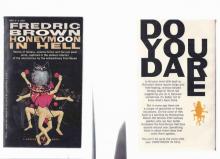 Hall of Mirrors
Hall of Mirrors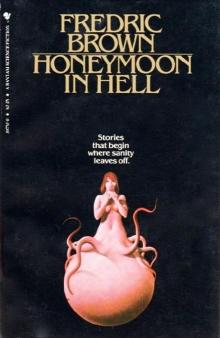 Honeymoon in Hell
Honeymoon in Hell The Shaggy Dog and Other Murders
The Shaggy Dog and Other Murders The Far Cry
The Far Cry Arena
Arena Mostly Murder
Mostly Murder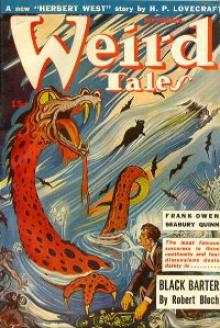 The Geezenstacks
The Geezenstacks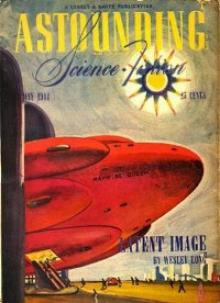 The Yehudi Principle
The Yehudi Principle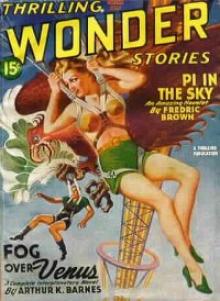 Pi in the Sky
Pi in the Sky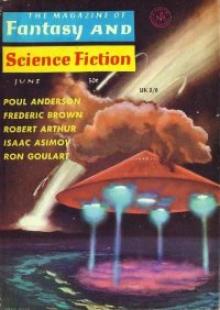 Eine Kleine Nachtmusik
Eine Kleine Nachtmusik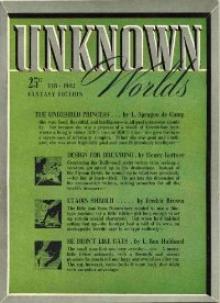 Etaoin Shrdlu
Etaoin Shrdlu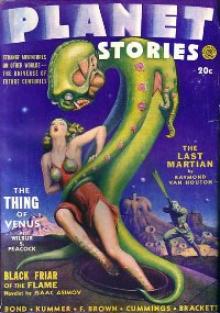 The Star Mouse
The Star Mouse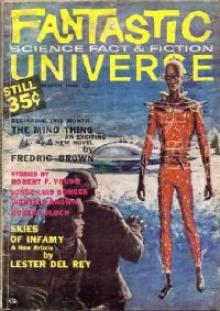 The Mind Thing
The Mind Thing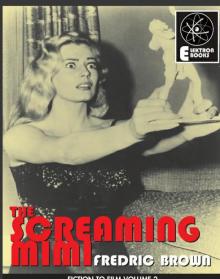 The Screaming Mimi
The Screaming Mimi The Fabulous Clipjoint
The Fabulous Clipjoint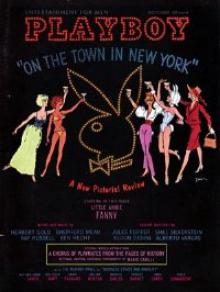 Puppet Show
Puppet Show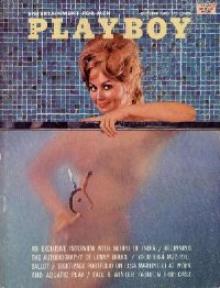 It Didn't Happen
It Didn't Happen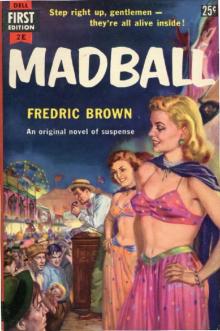 Madball
Madball Happy Ending
Happy Ending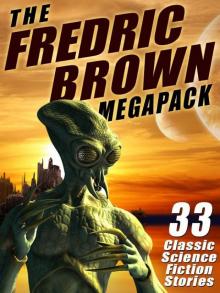 The Fredric Brown Megapack: 33 Classic Science Fiction Stories
The Fredric Brown Megapack: 33 Classic Science Fiction Stories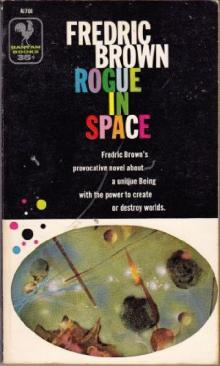 Rogue in Space
Rogue in Space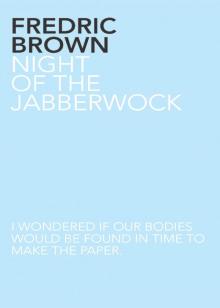 Night of the Jabberwock
Night of the Jabberwock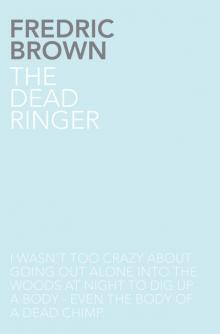 The Dead Ringer
The Dead Ringer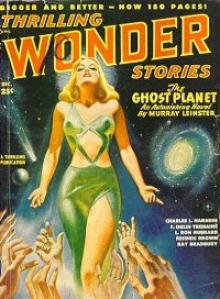 Knock
Knock We All Killed Grandma
We All Killed Grandma Space On My Hands
Space On My Hands The Collection
The Collection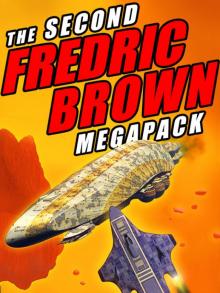 The Second Fredric Brown Megapack: 27 Classic Science Fiction Stories
The Second Fredric Brown Megapack: 27 Classic Science Fiction Stories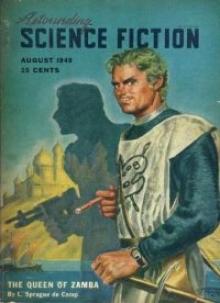 Letter to a Phoenix
Letter to a Phoenix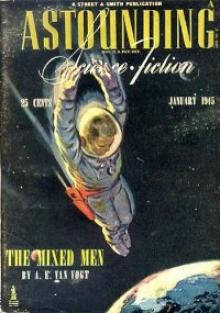 The Waveries
The Waveries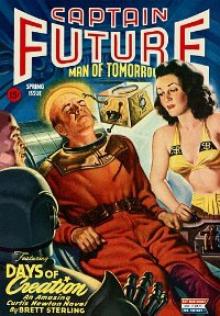 Nothing Sirius
Nothing Sirius The Deep End
The Deep End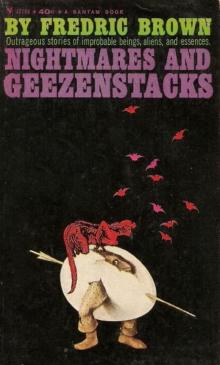 Nightmares & Geezenstacks
Nightmares & Geezenstacks Come and Go Mad
Come and Go Mad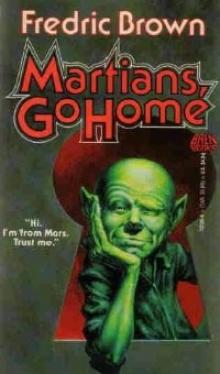 Martians, Go Home
Martians, Go Home